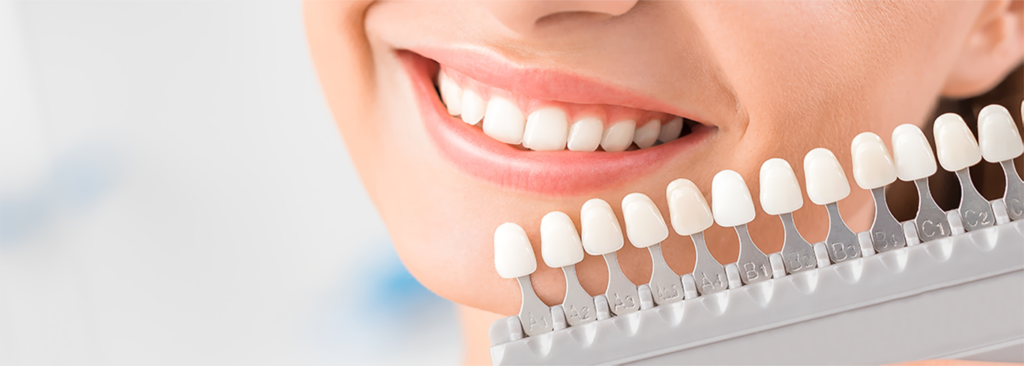
Dental veneers (sometimes called porcelain veneers or dental porcelain laminates) are wafer-thin, custom-made shells of tooth-colored materials designed to cover the front surface of teeth to improve your appearance. These shells are bonded to the front of the teeth changing their color, shape, size, or length.
Dental veneers can be made from porcelain or from resin composite materials. Porcelain veneers resist stains better than resin veneers and better mimic the light reflecting properties of natural teeth. You will need to discuss the best choice of veneer material for you with your dentist.
What Types of Problems Do Dental Veneers Fix?
Veneers are routinely used to fix:
- Teeth that are discolored — either because of root canal treatment; stains from tetracycline or other drugs, excessive fluoride or other causes; or the presence of large resin fillings that have discolored the tooth
- Teeth that are worn down
- Teeth that are chipped or broken
- Teeth that are misaligned, uneven, or irregularly shaped (for example, have craters or bulges in them)
- Teeth with gaps between them (to close the space between these teeth)
How porcelain veneers are done ?
With porcelain veneers, your dentist may give you a local anesthetic (freezing). Your dentist then removes a thin layer of the enamel from your teeth to make room for the veneers. Then your dentist makes a mold of your teeth. This mold is used to custom-make your porcelain veneers. In the meantime, your dentist may place temporary veneers to replace the portion of the tooth that was removed. These are worn until your porcelain veneers are ready. The temporary veneers are very fragile and need to be treated gently during eating and cleaning as they come loose very easily
On your next visit, your dentist removes the temporary veneers and puts a mild chemical on your teeth to make them a little rough. This helps the porcelain veneers stick to your teeth better. The porcelain veneers are then glued to your teeth one by one, using composite resin cement.
Who can get veneers?
Not everyone is a good candidate for veneers. Here are some reasons why your dentist may suggest treatments other than veneers:
If a tooth has decay or is in an area that has periodontal disease (gum disease). These problems must be treated first.
If a tooth has little enamel left, a veneer will not stick to it properly.
If too much of the tooth is missing, a crown may be another option.
If a person grinds or clenches his or her teeth. This habit is called bruxism and can chip or break porcelain veneers.
What Else Should I Know?
Just like your natural teeth, your veneered tooth needs to be brushed and flossed daily.
If the veneers are not fully placed or sealed onto your tooth, stains or cavities can form under the veneer.
Once you have veneers, you cannot reverse the treatment because part of your enamel has been removed.
If a veneer chips or peels off, or if a cavity forms under a veneer, the veneer must be redone. The other option is to put a crown on the tooth.
Constantly grinding or clenching your teeth may cause your bonding or veneers to chip or break.
Porcelain veneers and bonded teeth can be chipped if you are not careful when biting or tearing into hard or chewy foods. Do not bite hard objects like ice cubes or fingernails.
Cosmetic dental treatments like bonding or veneers might not be covered by your dental plan. You may be responsible for those costs yourself.
